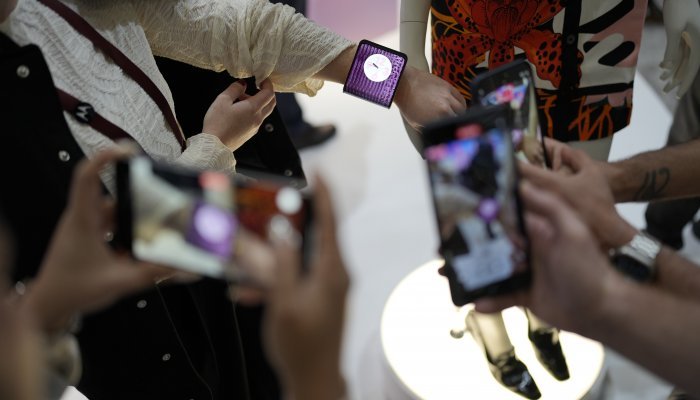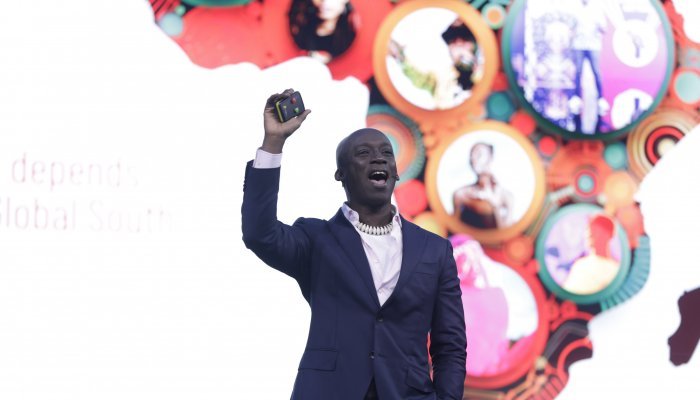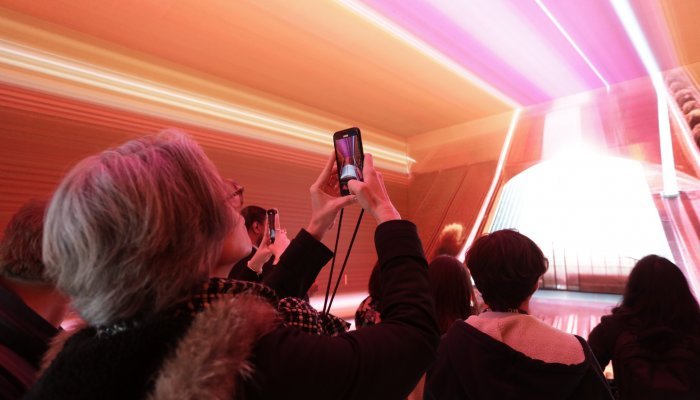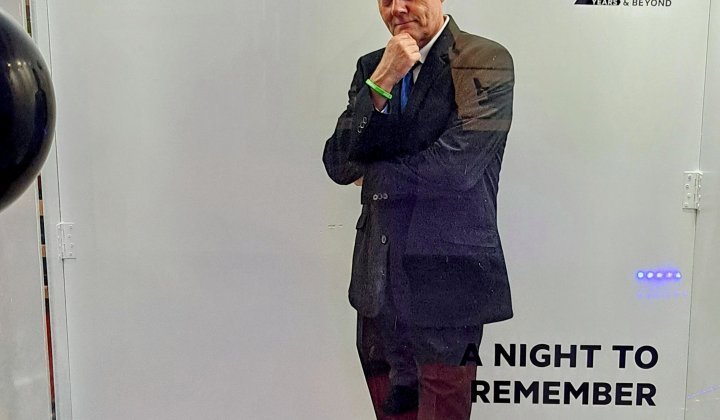In 2020, when Universal Music Publishing Group paid an estimated $300 million for Bob Dylan’s entire songwriting catalogue, which includes more than 600 songs over his 60-year career, it was one of the most significant publishing deals in history. A year later, Sony Music dialled up the volume by paying an estimated $500 million for the entire music catalogue, including both songwriting and recording rights, of Bruce Springsteen. But for every artist who hits the jackpot like this, many others aren’t so fortunate.
“One of the big issues facing our world today is that the people who drive cultural trends across the globe don’t actually enjoy the profits or the benefits of the culture they create,” says Derrick N. Ashong, a three-time Emmy-nominated entrepreneur and producer.
“And unfortunately, this is nothing new. Some of the biggest names in the world couldn’t get connected. And even now that the digital world has promised to level the playing field and make everything okay, that’s not really how it’s turned out.”
Empowering users to own their experiences
Chris Dixon, a venture capitalist at Andreessen Horowitz, one of the world’s leading venture capital firms, recently released a compelling book called Read Write Own: Building the Next Era of the Internet. In it, he explores the evolution of the internet.
Dixon delineates three key phases: the initial phase allowed users to read content online, the second phase enabled users to create and publish their own content, and the forthcoming third phase will empower users to own their experiences, assets, and identities online.
“But what happens if you can’t get online at all?” Ashong asks.
“That’s where we come in. I created TBTM as a 21st-century tech-driven studio targeting the Global South and diaspora. We’re a web3-based entertainment platform and our solution is something we call Kola, which derives its name from the kola nut, a significant item in West African culture historically used for trade. Kola is envisioned as a universal reward token tailored for the media and entertainment sectors, functioning similarly to frequent-flyer miles but designed for both fans and creators.”
Essentially, whenever a consumer interacts with content powered by a specific API (application programming interface), the system assesses the engagement’s value. Both the content creator and the consumer receive a reward for this engagement. As users accumulate points, they have the option to exchange them for a digital token, which is backed by actual currency.
“According to GroupM, the digital advertising space is projected to reach $1.2 trillion annually by 2028,” Ashong says. “Kola’s role in this ecosystem is to redirect a portion of that revenue back to the content creators and the users who drive the engagement, essentially fuelling this substantial market. This makes sure that those contributing to the generation of this vast amount of digital advertising revenue are rewarded for their efforts.”
Rewarding creators who shape our culture
TBTM already has some influential partners on board, notably MasterCard. Its collaboration aims to expand and innovate financial service products to reach communities that need and deserve them. This partnership also aims to ensure that the tangible value generated can be accessed and used by people in their everyday lives.
“It opens up significant opportunities within the telecom sector,” Ashong says. “People can actually use Kola to buy mobile data. We’ve already done the first technical integration in Nigeria to prove how that works and we’re now expanding to other markets across the Global South. That means telcos have the opportunity to get part of that $1.2 trillion in digital advertising in the form of people being able to pay for their data.”
Of course it doesn’t just stop at data. Because Kola is worth real money, Ashong explains that people who engage with online content to drive value through digital advertising can earn enough to buy a phone.
But if this means that millions of people can finally have the opportunity to gain the resources they need to connect with the world, why has nobody done this before?
“I think the answer is quite simple,” Ashong says. “It’s because big media, already profiting from digital advertising, doesn’t see the need for telecom involvement. With all due respect, they’re at the core of many issues — why Muddy Waters was underpaid, Prince changed his name, and why TLC, despite being multi-platinum, declared bankruptcy, among others. The strikes we saw by writers and actors weren’t because media companies are evil; they stem from a disregard for the creators who shape our culture.”
Tapping into a global, multicultural world
Why pursue this now? For Ashong, one of the main reasons is privacy. A new generation is questioning the value they receive in exchange for the engagement and data analytics they generate online. Additionally, the world is facing demographic shifts. Populations in Europe and North Asia are declining and without immigration the United States would face a similar problem. This means that in the next few decades all the population growth and workers of the future are going to come from places such as Africa.
“The interesting thing is that kids growing up today are already tapped into a global, multicultural world,” he says. “I remember when I was a kid, my mother used to sing me a song that came from Nigeria, even though I’m Ghanaian. It was the most popular song in West Africa at the time. As I grew up all around the world — in Ghana and Brooklyn (New York) and Riyadh (Saudi Arabia) and Doha (Qatar) — I started meeting all these people from different cultures that were contributing different ideas to what I understood of the culture that I came from.”
Ashong attended Harvard University, where he focused on Afro-American studies, winning the Hoopes Prize for his senior thesis. He later embarked on a PhD in Ethnomusicology and Afro-American studies with a Paul & Daisy Soros Fellowship. But his academic journey took a turn when Dave Stewart of British pop duo Eurythmics invited him to join record label Weapons of Mass Entertainment, leading Ashong to delve into the entertainment industry.
Granted, this wasn’t totally new for him. Indeed, his artistic ventures began at Harvard, where he produced the musical Songs We Can’t Sing and formed the band Soulfège, known for its global reach through outlets like MTV Africa and BBC World Service. He explored new forms of creative expression after his graduation, with acting credits that include a role in Steven Spielberg’s Amistad. Beyond his artistic endeavours, Ashong has hosted several notable TV and radio shows, including The Derrick Ashong Experience on Oprah Radio and The Stream on Al Jazeera English.
Merging culture from different streams
Throughout this career, Ashong has spoken extensively on music, technology, and society at prestigious forums worldwide, all the while advocating for the philosophy of open-source music. Take Back the Mic, the interactive talent docu-series that is TBTM’s standout initiative, has garnered significant acclaim, including two Emmy nominations and five Telly Awards opposite industry giants like Netflix, HBO, and Disney+. It has achieved over a billion media impressions worldwide and made its mark with six billboards in New York’s Times Square. Its fan participation model is now expanding from Africa to territories around the world.
“We live in a global world where culture merges like water flowing from one stream into another until we reach a mighty ocean,” he says. “Imagine every young person in Africa, in the Middle East, in South-East Asia, or in Latin America, with a smartphone. What are the implications? Hundreds of millions of new connected consumers who can afford to get a phone and can afford to get online because a piece of that ad revenue finally goes back to Lagos, to Mexico City or Kuala Lumpur and not just Mountain View, California. We’re looking at the first generation of creatives in human history to be fairly compensated for creating global culture. That’s why our mission is turning culture into currency. And we’re inviting everyone to join us.”
Learn more: https://tbtm.app/
Stop the music
The music industry has a history of tales where legendary artists received less than favourable deals from their record labels. A few poignant examples highlight the disparity between commercial success and financial compensation.
- Muddy Waters: Despite being a monumental figure in blues and influencing countless rock and roll legends like the Rolling Stones and Jimi Hendrix, Muddy Waters found himself indebted to his record label at the time of his death. He owed $56 000, a stark contrast to the cultural and musical wealth he generated throughout his career. This situation underscores the financial challenges even genre-defining artists have faced.
- TLC: The best-selling girl group of the 1990s experienced staggering commercial success but saw little financial reward due to their record deal’s terms. Despite generating approximately $175 million in revenue, they filed for bankruptcy, revealing they had received only about 1% of the cash their music generated. Their financial struggles during the peak of their fame highlight the often exploitative nature of record contracts.
- Prince: Known for his iconic music and unique persona, Prince famously changed his name to an unpronounceable symbol during a battle over the rights to his music. His dispute was rooted in the control over his recordings and his desire for artistic freedom, a stance that led him to challenge the traditional music industry’s constraints fiercely. Prince’s battle is yet another example of the importance of copyright and control within the industry, illustrating how even the most successful artists can struggle for ownership over their work.
For Ashong, these examples serve as a sobering reminder of the music industry’s complexities and the importance of equitable agreements between artists and record labels. They reflect a broader conversation about rights, ownership, and fair compensation in the creative fields.








